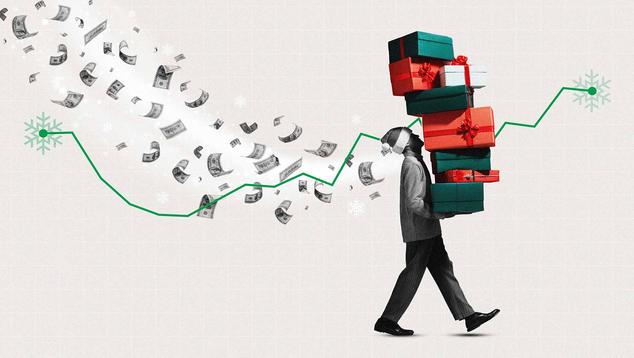Story Highlights
- Average estimated holiday spending of $1,007 is similar to $1,014 in 2024
- Stability masks tighter expected gift spending among lower-income households
- Initial consumer spending forecast points to solid holiday retail season
WASHINGTON, D.C. — Gallup’s initial measurement of Americans’ 2025 holiday spending finds consumers expecting to lay out an average of $1,007 on gifts this season. That is similar to the historically elevated $1,014 they predicted at this time last year, but up from $923 in 2023.
The latest results are from an Oct. 1-16 Gallup poll.
Although Americans are less religious than in decades past, the holiday season remains a powerful force in the economy, with at least 86% of consumers planning to buy gifts this year. About a third (31%) anticipate spending up to $499, 18% say they will spend between $500 and $999, and 37% predict spending $1,000 or more. Eight percent say they will spend nothing or don’t celebrate the holiday, while 5% are unsure what they’ll spend.
Most Say They’ll Spend ‘About the Same’
The latest poll also updated Americans’ perceptions of whether the amount they expect to spend on holiday gifts will be more than, the same as or less than what they spent last year.
As has always been the case, the majority of Americans say they’ll spend about the same as they did the prior year, though this year’s 56% is slightly below the average of 60% for the trend since 2006. At the same time, 19% — slightly above the long-term average of 14% — think they’ll spend more, while 23% say they’ll spend less, nearly matching the trend average.
Consumer caution about holiday spending surged during the Great Recession, when about a quarter of Americans said they were cutting back. They were at their most comfortable from 2017 to 2019, when nearly equal shares said they would spend more and spend less.
Lower-Income Americans Tightening Their Holiday Belts
While the overall average spending estimate is unchanged from last year, there have been notable shifts by income group. Americans in households earning less than $50,000 now expect to spend $651 on holiday gifts, down more than $100 from last year’s $776. Meanwhile, those in households earning $100,000 or more predict spending $1,479, up from $1,403. Middle-income earners project spending $847, which is more similar to their forecast last year of $902.
Consumers’ perceptions of how their spending will change mirror these patterns. Just 18% of lower-income Americans say they will spend more this year, down from 28% last year. Half now say they’ll spend about the same, up 10 percentage points, while 30% anticipate spending less, similar to 28% a year ago.
Among higher-income Americans, 23% now say they plan to spend more, up slightly from 18%, while middle-income earners’ responses have held steady.
Spending Intentions Positive, but Not Guaranteed
Gallup’s October reading of Americans’ holiday spending plans often foretells the strength of actual retail performance in November and December.
In years when the average October spending estimate declined — such as 2008, 2009, 2016 and 2018 — holiday sales growth was typically below the long-term average of 3.9% or declined outright, as in 2008. (In the first year of the pandemic, 2020, a sharp decline in intended spending in October did not result in low sales growth, but consumers’ November forecast was more aligned.)
Conversely, in years when October projections were stable (as in 2010, 2011, 2014 and 2023) or increased (in 2017, 2019, 2021, 2022 and 2024), holiday retail sales were generally average or better.
Based on Gallup modeling of the historical relationship between October forecasts and actual retail results, the stability in this year’s spending estimate suggests 2025 holiday sales may rise by 4% to 5%.
Bottom Line
While Americans haven't increased their estimate of what they'll spend on holiday gifts this year compared to last, continuity on this metric has historically been a sign that holiday sales will be better than average. This finding is reinforced by a slightly larger proportion of Americans than usual saying they'll be spending more than they did last year.
This comes as inflation has crept back up to 3%, wage growth has dipped and economic uncertainty stemming from the government shutdown could be mounting. While these financial strains could further dampen lower-income Americans’ already cautious spending, continued strong performance in the stock markets, reaching all-time highs in October, may ensure wealthier households’ holiday spending intentions remain strong. Gallup’s November update will shed light on whether these patterns materialize.
Stay up to date with the latest insights by following @Gallup on X and on Instagram.
Learn more about how the Gallup Poll Social Series works. View complete question responses and trends (PDF download).




